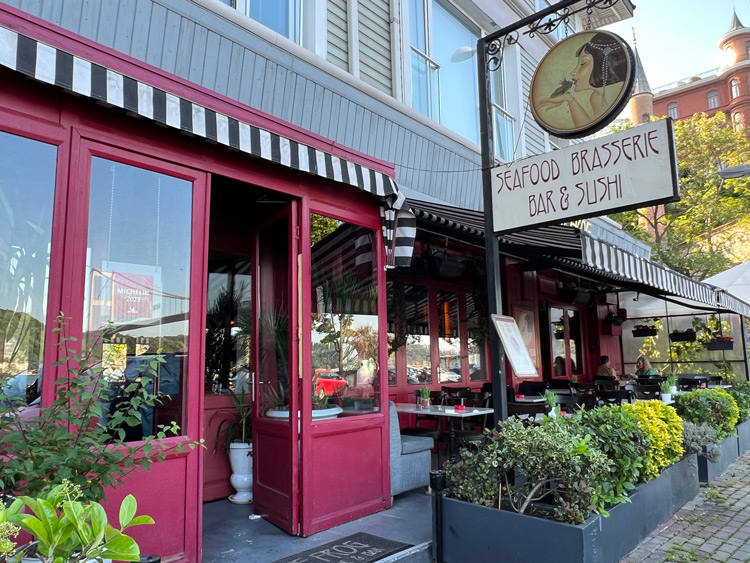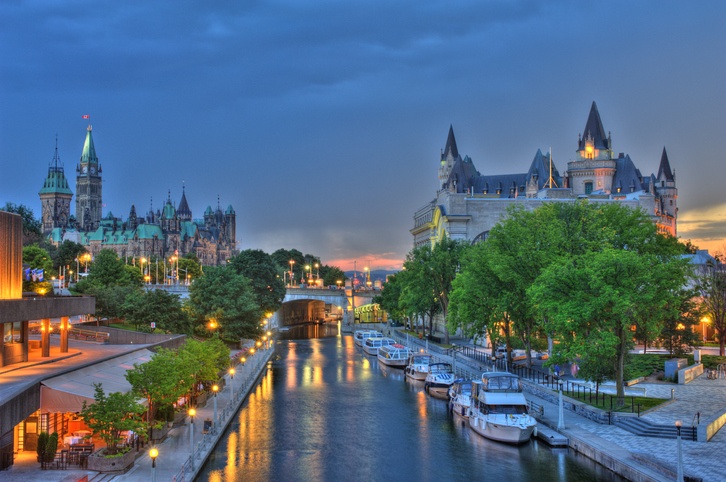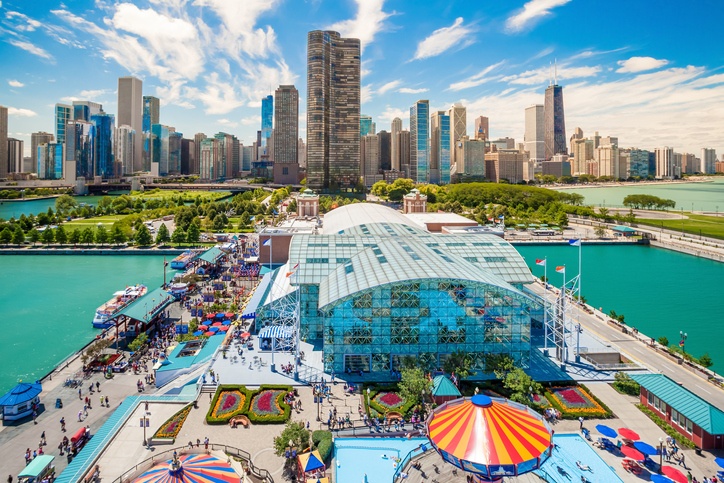A nautical nirvana from sea to land – A boater’s rendezvous with Istanbul, Ankara, and Cappadocia, Turkiye – Part 2
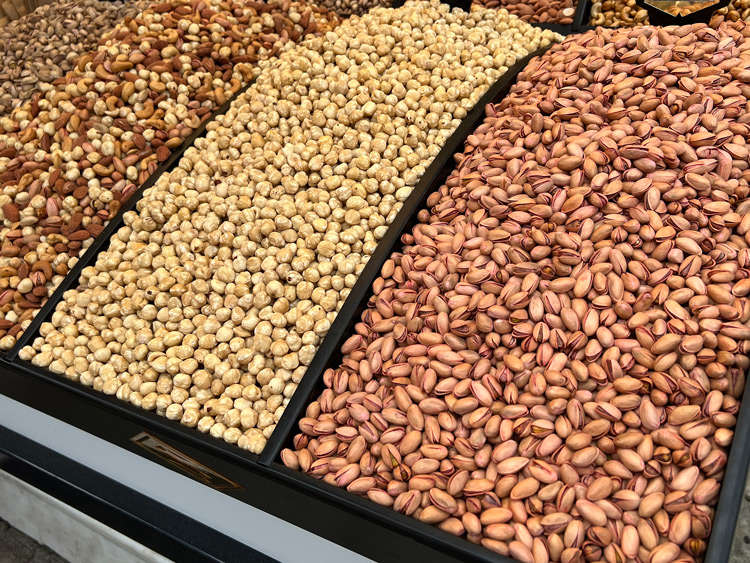
Estimated reading time: 15 minutes – ABR* – Welcome to Part 2 of our rendezvous with Istanbul! After embracing the allure of the Bosphorus with its glimmering waters in Part 1, it’s time now to immerse ourselves in the vibrant streets of Istanbul. Let’s spend a few days here, delving into a culinary adventure that promises to tantalize our taste buds. Istanbul is not just a city to be explored from the water; its true essence unfolds on land, waiting to be discovered by those willing to wander its enchanting streets and hidden corners.
Food Lover’s Paradise
Now, let’s delve into the heart of Istanbul like locals, exploring the flavors that make this city a gastronomic haven. We’re about to embark on an adventure through Istanbul’s dynamic culinary scene, from tantalizing street food to hidden gems in quaint neighborhoods. Get ready for a feast that will tantalize your taste buds and leave you longing for more.
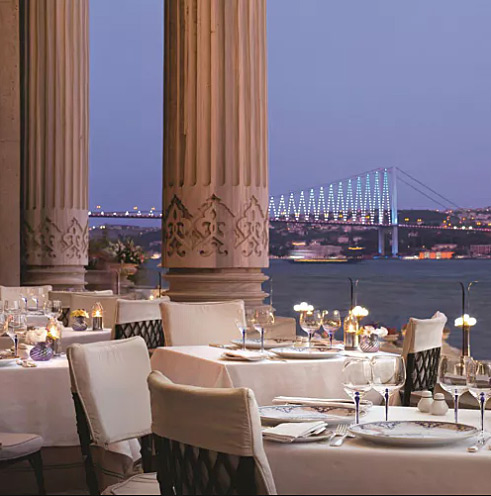
Home to thousands of eateries, Istanbul caters to every palate, whether it’s lovingly cooked street food or Michelin-starred dining experiences. For those eager to begin with Michelin-listed restaurants, Istanbul boasts 77 of them, including distinguished and Green Star establishments. A top pick is the two-Michelin-starred restaurant Turk Fatih Tutak, an ideal starting point for your Michelin journey in Istanbul.
The Grand Feast
Let’s embark on a journey of exquisite dining experiences, starting with Mikla. Located atop the Marmara Pera Hotel, Chef Mehmet Gürs skillfully dances with Turkish and Scandinavian flavors to create a culinary ballet. Revel in a gastronomic masterpiece, each bite accentuated by jaw-dropping views of Istanbul’s twinkling skyline.
For a seafood symphony don’t miss the Sunset Grill & Bar, an upscale venue that celebrates the bountiful Bosphorus’ seafood harvest. Set against a backdrop of sunsets that could inspire poets, the refined ambiance and masterful seafood delicacies will surely captivate your senses.
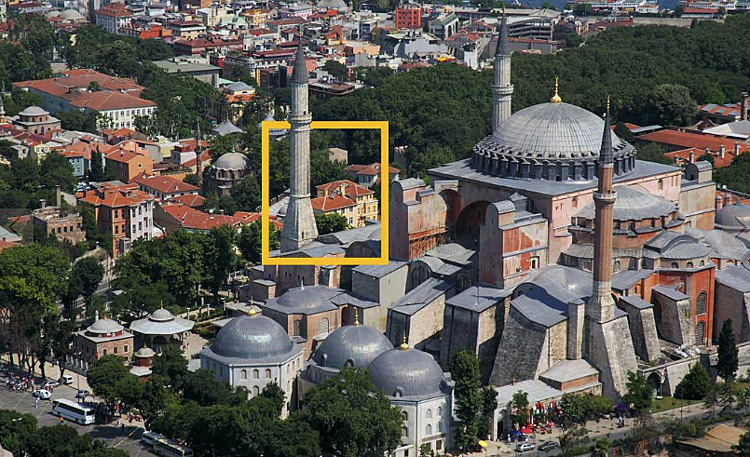
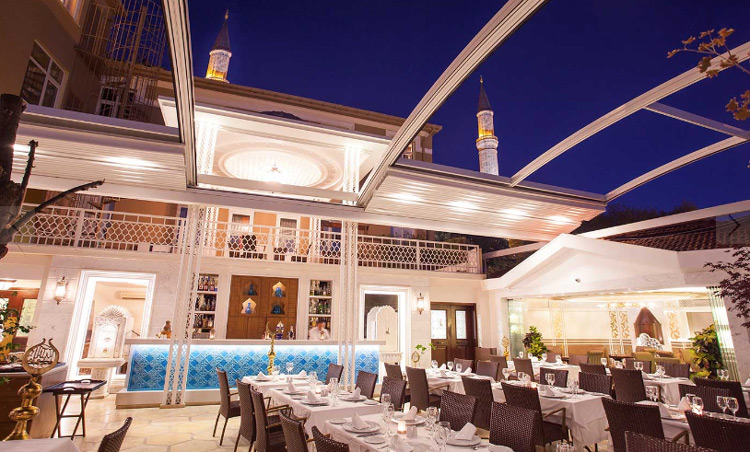
If you’re visiting the Hagia Sophia Grand Mosque or Topkapi Palace, make sure to stop by Matbah for lunch or dinner. They serve a selection of exclusive dishes that were once enjoyed at the Ottoman Sultan’s court. Conveniently situated in Sultanahmet, the heart of Istanbul’s old city, Matbah is surrounded by major historical and cultural sites and is, in fact, located right next to the Hagia Sophia.
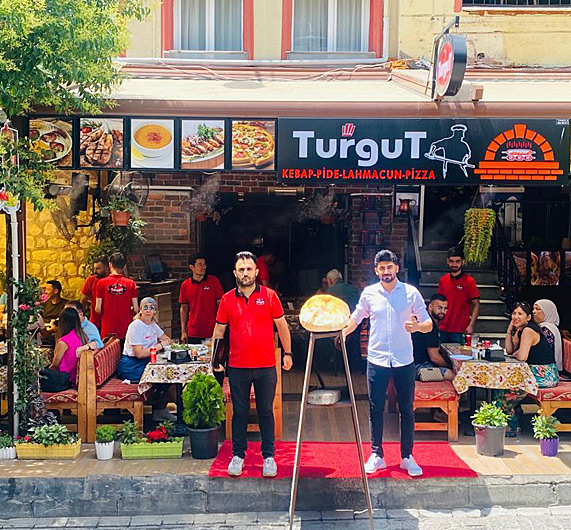
The old city is home to numerous Kebab houses, most of which are quite good. While the decor might not always be grand, the majority of these establishments offer decent food at reasonable prices. A notable mention is Turgut’s Pide, Kebab, Pizza, and Lahmacun. However, it’s important to note that the restaurants I’m mentioning here represent just a small fraction to give you an idea. There are countless restaurants and kebab houses in the Sultanahmet area. Many websites and travel books, as well as your hotel, can provide recommendations to satisfy all your dining expectations.
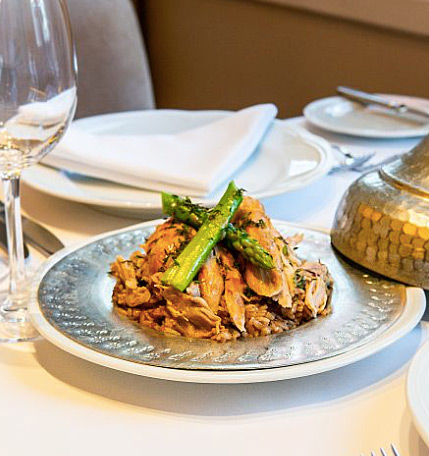
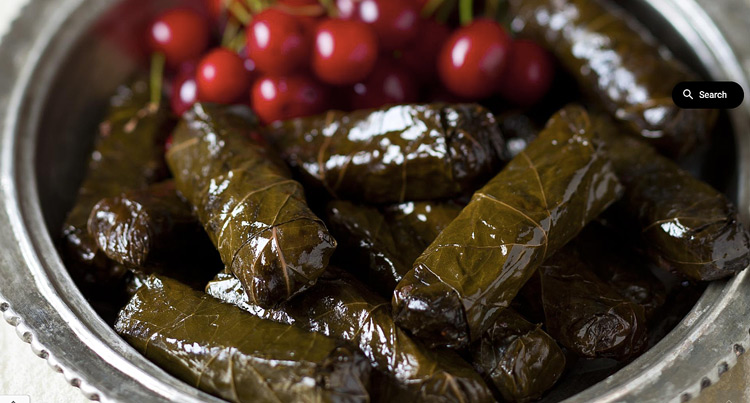
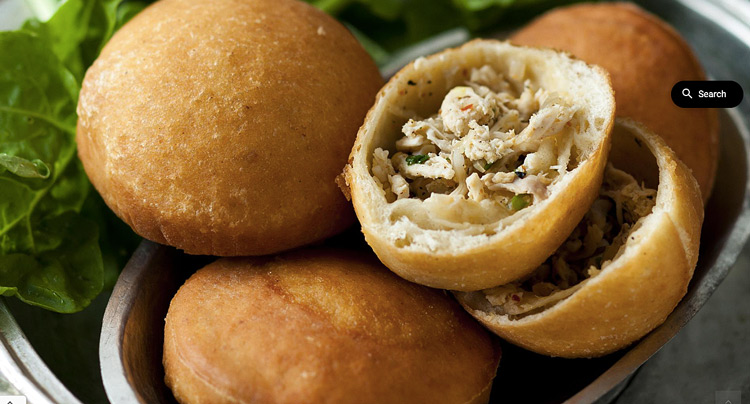
Try a taste of empire: indulge your royal fantasies at Asitane, an institution resurrecting the forgotten recipes of the Ottoman Empire. Relish sumptuous dishes such as lamb with quince and enjoy a meal that’s more than just food – it’s a journey through the annals of Ottoman culinary heritage.
Along the way don’t be surprised if a friendly local recommends a neighborhood restaurant to you. Chances are you will find equally delicious kebab or other Turkish dishes at a very affordable price that may be serving local merchants or the neighborhood. That is Istanbul for you.
However, there are a few known areas where you must avoid eating, such as restaurants on the Golden Horn Bridge. Most of them are tourist traps. They do serve you fresh fish and other Turkish dishes; however, they will also charge you extraordinary prices. You may end up spending $100 per person for a lunch that usually would cost less than $20 on either side of the bridge on land.
Kurufasulyeci Ali Baba
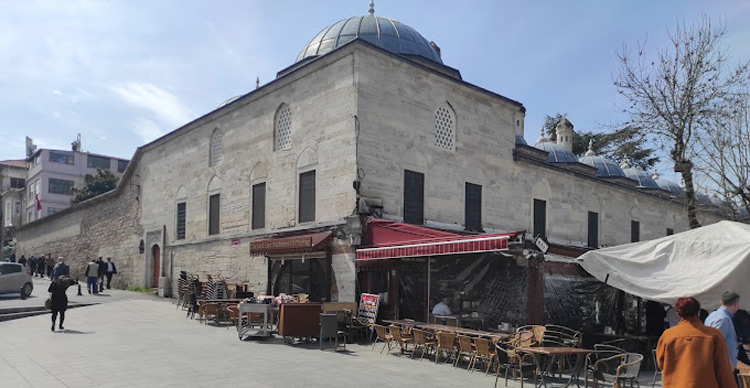
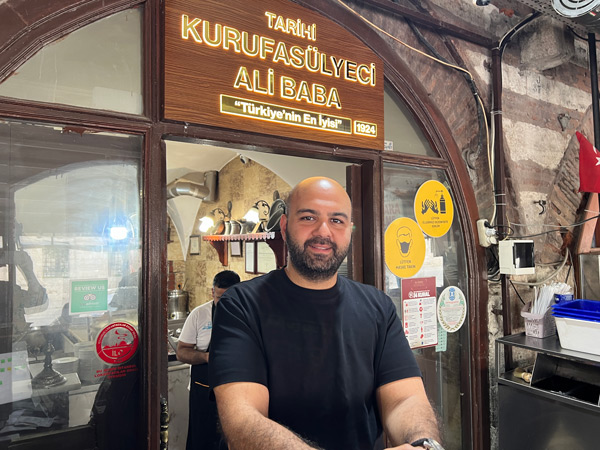
Any visit to Istanbul would not be complete without eating in a must-visit historical eating spot, Erzincanli Kurufasulyeci Ali Baba’s restaurant. It is housed in a building that was built in 1557 and was initially used as a stables. You must try a meal just like the locals eat, savoring a simple yet top-quality dish of white beans and pilav (Turkish rice). It is located in the Suleymaniye Mosque’s complex of old town Istanbul overlooking the mosque.
In October 2024, they will be celebrating the 100-year anniversary of the restaurant as well as one of the most humble, but well-loved, dishes in Turkish cuisine, cooked dry white beans a la great-grandfather Erzincanli Ali Korab. Hence the name of the restaurant, Erzincanli Kurufasulyeci Ali Baba.
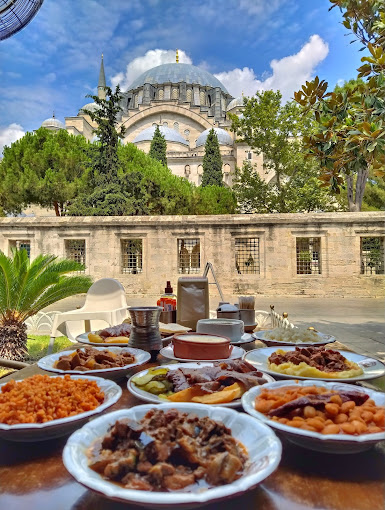
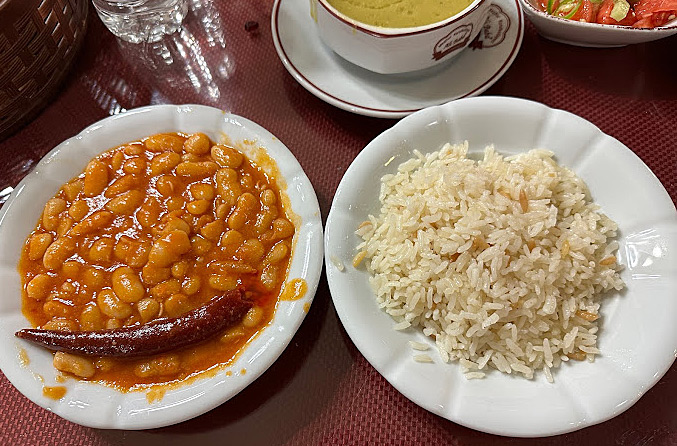
Ask for “az kuru,” for the bean dish I’m referring to. They soak the dry white beans for 24 hours and then cook it in tomato sauce and onions, along with their secret spice. In order to protect the secrecy of the spice, they first mix the spice with tomato paste elsewhere, then use it in the restaurant for cooking. Gokhan Guzel, the 4th generation owner-manager, proudly talks about a very special white bean imported from the city of Erzincan, their ancestral lands, that contributes to the legendary taste of their dish. He says the beans have to be 11 mm. If they are smaller, they do not accept them. The dish is slowly cooked in copper cauldrons over a charcoal fire, exactly the way they have been doing since 1924. Gokhan’s education was focused on consumer electronics; however, he too selected the family business. He first started as a dishwasher, moved to a waiter position, and then finally worked at the cash register. He believes in the old Turkish saying and has lived by it: “You can’t be an expert at any business without working as an apprentice.”
Now, walk over to the Suleymaniye Mosque across from Kurufasulyeci Ali Baba.
Suleymaniye Mosque
You are about to explore a mosque that is not just special for its architectural grandeur, but also for housing two tombs of great historical significance. While it may not be the largest of the Ottoman-era mosques, its magnificence and beauty are unparalleled. Impressively, it has preserved many of its original külliye (mosque complex) structures, which have been meticulously maintained and repurposed.

Commissioned by Sultan Suleyman I, known as ‘the Magnificent,’ the mosque was crafted by the renowned Chief Royal Ottoman Architect, Mimar Sinan. Sinan’s legacy spans over 300 civic structures, many still gracing Istanbul’s skyline, including religious buildings, palaces, inns, fountains, aqueducts, and schools. His most acclaimed work is the Suleymaniye Mosque in Istanbul, located on the city’s third hill of its famed seven summits. The construction began in 1550 and was completed in 1557.
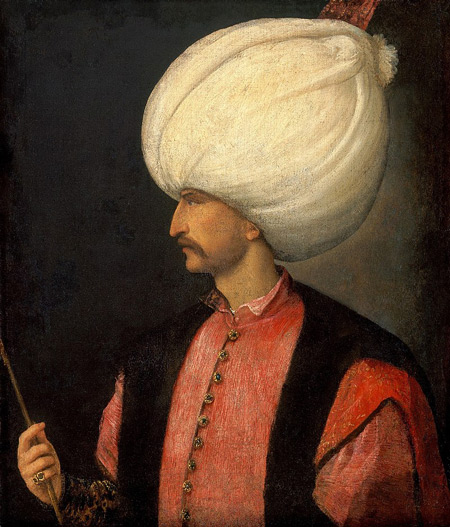
As you approach the mosque’s main courtyard, take a moment to observe the cemetery on the right. Here, amidst ornate tombstones, lie two particularly notable tombs. The first, grand and imposing, belongs to Sultan Suleyman the Magnificent (1494-1566), also known as Suleyman the Lawgiver. He was a reformer who united territories into a formidable empire. Suleyman I personally led Ottoman armies in conquering Belgrade and Rhodes, as well as most of Hungary, before his conquests were checked at the siege of Vienna in 1529. He annexed much of the Middle East in his conflict with the Safavids and large areas of North Africa as far west as Algeria. Under his rule, the Ottoman fleet dominated the seas from the Mediterranean to the Red Sea and through the Persian Gulf.

Here is a little-known fact for you: In Washington, DC, there are 23 marble relief portraits over the gallery doors of the House of Representatives Chamber in the U.S. Capitol. They depict historical figures noted for their work in establishing the principles that underlie American law. One of them is Sultan Suleyman the Lawgiver.

Behind Sultan Suleyman‘s tomb is a smaller, yet equally significant tomb, belonging to Hurrem Sultan, also known as Roxelana. Her birth name is not known. Born in Ruthenia (then an eastern region of the Kingdom of Poland, now Rohatyn in Ukraine), she was captured during a slave raid and eventually taken via the Black Sea slave trade to Istanbul, the Ottoman capital. Her story, especially her rise from a harem slave to becoming the legal wife of Sultan Suleiman and one of the most powerful women in Ottoman history, has been a subject of great interest and has taken on almost legendary proportions over the centuries.
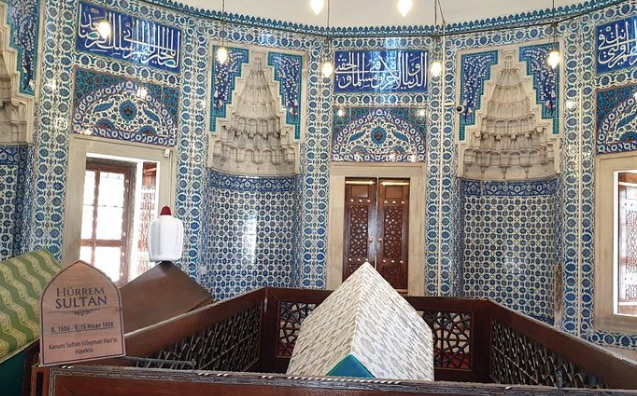
She entered the Imperial Harem where her name was changed to Hürrem, and she converted to Islam. Her conversion to Islam was a significant aspect of her life and played a role in her integration into Ottoman society and the royal court. She rose through the ranks and became the favorite of Sultan Suleyman. Breaking Ottoman tradition, he married Hurrem, making her his legal wife. Sultans had previously married only foreign noble ladies. Hürrem remained in the sultan’s court for the rest of her life, enjoying a close relationship with her husband and having six children with him, including the future sultan, Selim II.
Hurrem Sultan had a profound impact on the Ottoman court and society, and her story has captivated many, even inspiring the popular Turkish TV series, ‘Magnificent Century.’
Mimar Sinan Street
After your visit to the mosque, make your way to the rear of the building. There, you’ll catch a glimpse of a waterway, which is none other than the famous Golden Horn. While there are numerous spots in Istanbul to view the Golden Horn better, a unique opportunity awaits you here, especially after a meal at Kurufasulyeci Ali Baba.


If you’re up for a 15-minute walk, you can enjoy a two-for-one deal. Head down Mimar Sinan Street, circling around the Suleymaniye Mosque’s wall to its far end, spanning the entire length of the mosque. This walk is just a few hundred yards. At the cross street, you will find yourself facing the tomb of the mosque’s architect, Mimar Sinan. Nearby, there’s a modest venue, Mimar Sinan Teras Cafe, which boasts an excellent observation terrace. From there, you can enjoy sweeping views of the Golden Horn, the Golden Horn Bridge, the beginning of the Bosphorus, the first of the three Bosphorus bridges, and the Marmara Sea.
Exploring the Colorful Streets of Balat
Nestled on the historic banks of the Golden Horn in Istanbul, Balat is a hidden gem waiting to be explored. This historic neighborhood, with its rich past and vibrant present, offers a picturesque journey back in time. Balat’s narrow, cobbled streets and colorful houses create a tapestry of vivid hues, each telling its own story. Once a melting pot of cultures – Jewish, Greek, Armenian and Muslim Ottomans – Balat has retained its multicultural charm, evident in the architectural diversity ranging from Byzantine churches to Ottoman-era synagogues and traditional Turkish houses.
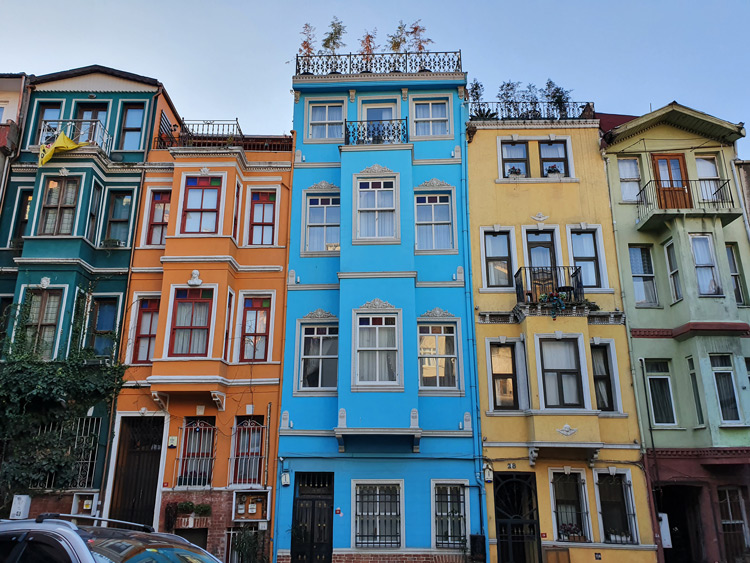
Balat was historically a Jewish quarter, becoming a significant center for Jews after the expulsion of Jews from Spain in 1492. Sultan Bayezid II welcomed Jews persecuted under the Spanish Inquisition, and even sent a fleet to Spain to rescue them. In the late 15th century, the Sultan offered citizenship to Jews and Muslims fleeing the Inquisition in Spain and Africa.
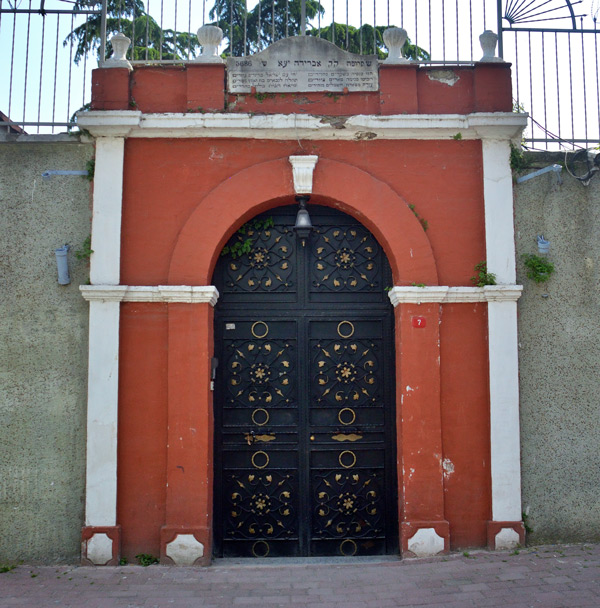
Balat is more than just a feast for the eyes; it’s a living museum of Istanbul’s multicultural heritage. The area is dotted with significant historical landmarks. One such treasure is the Ahrida Synagogue, one of the oldest in Istanbul, known for its boat-shaped bimah. Nearby, the Greek Orthodox Church of St. George stands as a testament to the neighborhood’s Greek past. In 1985, Balat was inscribed on the UNESCO World Heritage List as one of the Historic Areas of Istanbul. As you wander, you’ll find small, cozy cafes and art galleries tucked away in the corners, each offering a unique window into the local life and culture of this eclectic district.
In recent years, Balat has emerged as a hub for artists and creatives, drawn by its historical aura and inspiring scenery. This artistic revival has brought with it a wave of trendy cafes, vintage shops, and artisanal stores, breathing new life into the ancient streets. Culinary adventurers will delight in the variety of flavors offered here – from traditional Turkish delights and street foods to more contemporary fare in quaint eateries. Each restaurant and café in Balat is a unique blend of the neighborhood’s past and present, offering dishes that are as much a feast for the palate as the surroundings are for the eyes.
The Flavors of Istanbul’s Streets
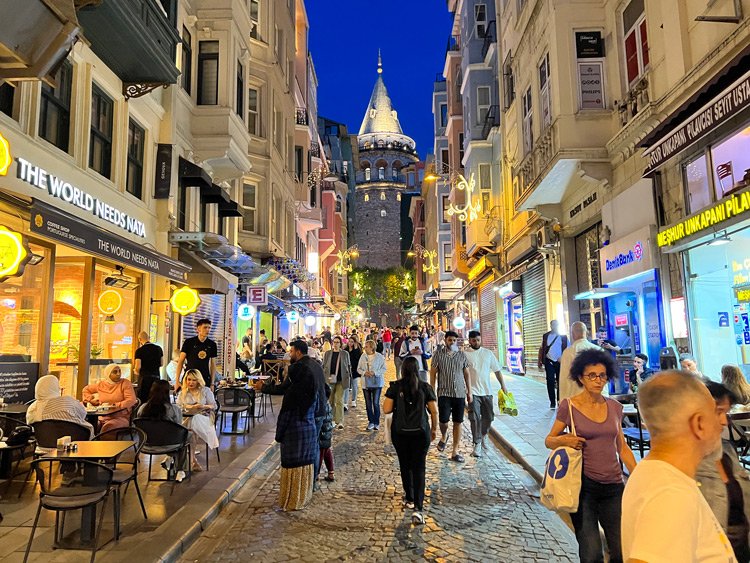
Istanbul’s streets are culinary corridors filled with flavors and aromas. Savor the simple pleasure of biting into a crispy gözleme or a doner kebab, or break your fast like a Turk with a smorgasbord of warm bread, cheeses, olives, pastries, and piping hot tea. Capt it off with Turkish Coffee. You can take culinary masterclasses and immerse yourself in a hands-on Turkish cooking class, or dive into a wine tasting session, learning about the rich varietals Turkey has to offer.
Watch out for the lawless moped scooters
Although Istanbul’s traffic can be overwhelming—with gridlock, a diverse array of vehicles, and the capricious, sometimes overcharging yellow cab taxis (opt for Uber if you need transportation)—there is a surprising semblance of order in the chaos.
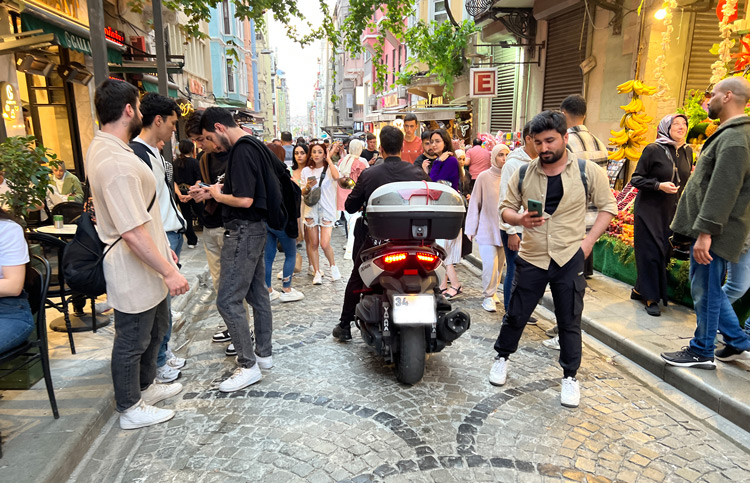
However, there’s one type of vehicle that seems to operate outside the realm of traffic rules or any law: the scooters. These ‘lawless scooters,’ as I call them, pose a unique challenge to pedestrian safety. They zip around as if they own the streets, riding fast everywhere – including on sidewalks, against traffic, between cars, on pedestrian-only roads (see above), and even in crowded areas.
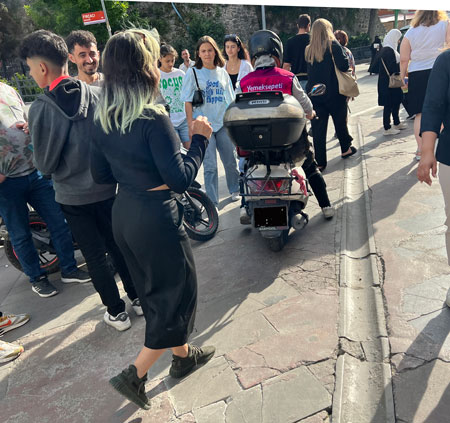
It appears that the police and municipal authorities often turn a blind eye to their reckless behavior. So, when you’re walking the streets of Istanbul, be extra cautious of these scooters.
Cats, cats everywhere
Istanbul, a city as famous for its historical landmarks as it is for its feline and canine residents, harbors a unique culture of street animals, particularly cats and dogs. Why are there so many cats in Istanbul?

These animals are an integral part of Istanbul’s charm and daily life. Roaming freely, they are cared for by the local community, embodying the city’s collective spirit of compassion and coexistence. Cats perch on café chairs, bask in the sun atop ancient walls, and weave through the legs of passersby in the bustling markets, while friendly dogs nap in the shade of the city’s numerous parks or trot alongside the locals.
This harmonious relationship between humans and animals adds an extra layer of warmth and authenticity to the vibrant streets of Istanbul, making the city not just a historical marvel, but also a haven for these beloved creatures.
Tombili, Istanbul’s most famous cat
Tombili (a common Turkish nickname for a chubby pet) was a street cat who lived in Ziverbey in the Kadıköy district of Istanbul. Tombili became popular with residents of the neighborhood for his friendliness and his way of leaning against steps. As a result of a photo of this pose, the cat became known worldwide in social networks and became an internet phenomenon. In 2016, Tombili fell seriously ill and eventually died in early August. However, there is more to the story of Tombili, complete with short-lived intrigue.

As your maritime pilgrimage comes to an end, you’re awash with emotions—gratitude for the indelible memories etched, a sense of achievement from commandeering Istanbul’s vibrant streets and Bosphorus currents, and an insatiable yearning for more marine pursuits.
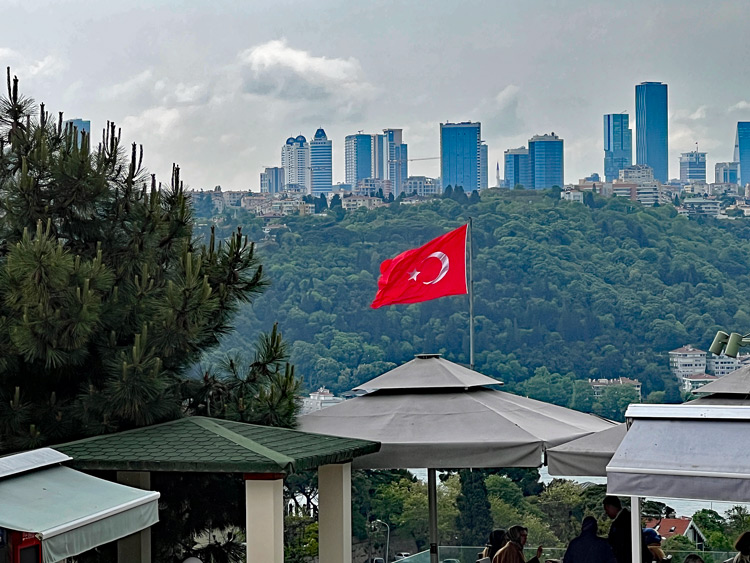
From Istanbul’s bustling avenues to the Bosphorus’ peaceful embrace, your boating extravaganza offers a unique vantage point on this enchanting city. So, fly-in, immerse in Istanbul’s cultural opulence, luxuriate in epicurean delights, and let the waves guide you on an entrancing voyage.
As the adage goes, “Not all who wander are lost”—they’re just charting new nautical narratives!
Well, that’s it for now. Stay well. I hope to say hello to you if you spot my boat, Life’s AOK. I bid you Fair Winds and Following Seas.
Cover photo: A vibrant display in Istanbul’s Eminonu district in the Spice Bazaar, featuring pistachios on the right, hazelnuts in the center, and a mix of nuts on the left. Photo by TripsOfDiscovery.com
5 things I learned
The elephant in the room: Airbnb
There’s no shortage of guidebooks and online resources to help you find the perfect accommodation in Istanbul. They range from a variety of tourist chain hotels, budget hotels, and luxury hotels (my personal favorite for luxury – Ciragan Palace Kempinski). Not to mention boutique hotels, motels, bed and breakfasts, inns, vacation rentals, outdoor lodging, and even campgrounds. However, let’s address the elephant in the room: Airbnb. Some localities have outlawed or put restrictions on Airbnb hosting for several reasons. Also, while popular for its affordability, Airbnb can sometimes be a true gamble, with accommodations that may not always meet your expectations, potentially jeopardizing your vacation. Therefore, I generally avoid Airbnb, full stop. Instead, I opt for hotels or, for longer stays, I prefer dealing with local property rental agents when available.
Enter local short-term rental property managers and Destination Management Companies
As we all know, in the 21st century the travel service industry functions on an extensive scale. You can find a wide variety of offerings both online and offline suitable for a diverse clientele. As I mentioned before, however, these services often lack direct control over resources at the actual destination. So, who manages these resources? Individual owners of listings, short-term rental Property Management companies, and Destination Management Companies (DCM) play a pivotal role in bridging the gap between travelers and local service providers. In the case of DCMs, you pay for their expertise, which lies in their in-depth local knowledge, ranging from language to prime tourism spots and authentic dining experiences.
Planning to spend a couple of weeks in Istanbul, in this case, we wanted more than just a hotel room; we sought a spacious apartment. A full-service short-term property management company offered us just that with its extensive inventory of short-term rental apartments. Their friendly agent provided a warm welcome, orienting us with the building and its amenities. The apartment, located in a top-notch neighborhood close to main tourist spots, was modern, air-conditioned, and delightful.
However, we faced an unexpected hiccup. Despite arriving in late spring, expecting perfect weather, we were met with unusually high temperatures – and the air conditioning was not yet operational due to municipal regulations on central air conditioning systems. After reaching out to them, they promptly relocated us to another excellent apartment with individual air conditioning units.
Short-term rental, property management, and Destination Management Companies in Istanbul
There are a large number of local short-term rental, property management, and Destination Management Companies in Istanbul, as well as throughout Turkiye. We encourage you to do your own research. However, below is a mini list to help you kickstart your information gathering.
- MissafirHomes: Based in the Sariyer district of Istanbul, Missafir specializes in short-term rentals, offering a range of furnished apartments available for daily, weekly, and monthly stays in Istanbul as well as other parts of Turkiye. Apartments are located in desirable areas of Istanbul. The company provides 24/7 customer service to guests staying in their homes.
- Dodo: Based in the Beyoglu district of Istanbul, Dodo specializes in short-term rentals.
- Kackar Tour: Operating in Istanbul’s Old City district, their team of dedicated professionals offers a wealth of knowledge and experience. They provide a variety of travel services and journeys throughout Istanbul and across Turkiye.
- Travel Local – Turkiye: Personalized tours with the local destination experts.
- Turkey by locals: A travel agency offering tour packages with expert local guides for a different way to see Turkiye.
- Oskar Tours: A well-established DMC in Istanbul, offering a variety of services including leisure travel, corporate meetings, and incentive programs.
- Intra Tours DMC: Provides a range of services including hotel reservations, guided tours, and special interest programs across Turkey.
- Curio Travel (Turkey Tours Center): Offers personalized tours and travel services focusing on cultural, historical, and culinary experiences.
- Neon Tours: Another well-known DMC providing comprehensive travel services, including accommodation, transportation, and guided tours.
- Travel Atelier: Specializes in luxury travel services, custom tours, and unique experiences in Istanbul and across Türkiye.
- Made in Turkiye Tours: Arranges private tours.
UNESCO World Heritage Sites of Turkiye
Currently, there are 20 UNESCO World Heritage sites in Turkiye. Below is a short list:
- Aphrodisias (2017)
- Archaeological Site of Ani (2016)
- Archaeological Site of Troy (1998)
- Arslantepe Mound (2021)
- Bursa and Cumalıkızık: the Birth of the Ottoman Empire (2014)
- City of Safranbolu (1994)
- Diyarbakır Fortress and Hevsel Gardens Cultural Landscape (2015)
- Ephesus (2015)
- Göbekli Tepe (2018)
- Göreme National Park and the Rock Sites of Cappadocia (1985)
- Great Mosque and Hospital of Divriği (1985)
- Hattusha: the Hittite Capital (1986)
- Pamukkale (1988)
- Historic Areas of Istanbul (1985)
- Nemrut Dağ (1987)
- Neolithic Site of Çatalhöyük (2012)
- Pergamon and its Multi-Layered Cultural Landscape (2014)
- Selimiye Mosque and its Social Complex (2011)
- Xanthos-Letoon (1988)
Experience the Charm of Kumkapi – An evening at a Turkish meyhane
Discover ‘Kiss The Frog‘, a Michelin-listed Turkish bar along the Bosphorus
3 things I recommend
It’s worth noting that Istanbul is a vast megacity with many other vibrant neighborhoods and areas to explore. If you have specific interests or prefer a different atmosphere, you may consider other areas such as Beyoğlu, Nişantaşı, or the Bosphorus waterfront, which also offer luxury hotel options and a range of dining and entertainment experiences.
Ultimately, the best location for you to stay in a 5-star hotel in Istanbul depends on your preferences, budget, and the specific experiences you seek during your visit. Consider factors such as proximity to attractions, ease of transportation, and the ambiance you desire when selecting your accommodation.
HOTELS
If you’re looking for the most luxurious and expensive accommodation options in Istanbul, there are several high-end hotels that offer luxurious amenities and world-class services. However, it’s important to note that prices can vary depending on the season, availability, and room type. It’s advisable to check the hotel websites or contact them directly for the most accurate and up-to-date pricing information for your desired dates. Here are a few notable options:
Çırağan Palace Kempinski Istanbul: Located on the shores of the Bosphorus, Çırağan Palace Kempinski Istanbul is a lavish hotel housed in a historic Ottoman palace. It offers opulent suites, private butler service, a spa, multiple dining options, and stunning views of the Bosphorus.
Shangri-La Bosphorus, Istanbul: Situated in the Beşiktaş district, Shangri-La Bosphorus offers luxurious rooms and suites with panoramic views of the Bosphorus. The hotel features a spa, fitness center, indoor and outdoor pools, and exceptional dining experiences.
Four Seasons Hotel Istanbul at the Bosphorus: Set in a restored Ottoman palace on the Bosphorus waterfront, the Four Seasons Hotel Istanbul at the Bosphorus offers lavish rooms, a spa, fitness center, outdoor pool, and elegant dining options. Some rooms even have private terraces or gardens.
The Ritz-Carlton, Istanbul: Located in the heart of Istanbul, The Ritz-Carlton offers luxurious rooms and suites with views of the city or the Bosphorus. The hotel features a spa, fitness center, indoor pool, and several dining venues, including a rooftop terrace with panoramic views.
Swissotel The Bosphorus Istanbul: Situated in the Macka district, Swissotel The Bosphorus Istanbul offers upscale rooms and suites, a spa, fitness center, outdoor and indoor pools, and multiple dining options. The hotel boasts stunning views of the Bosphorus and the city.
Based on the suggested itineraries below, a convenient and popular area to stay in Istanbul, especially for accessing the major attractions and experiencing the city’s vibrant atmosphere, would be Sultanahmet. This historic district is home to iconic landmarks like the Hagia Sophia, Blue Mosque, and Topkapi Palace, which are within walking distance of each other.
Staying in Sultanahmet allows you to have easy access to the major attractions, enjoy the charm of the historic neighborhood, and immerse yourself in the city’s rich history. Additionally, the area offers a variety of accommodation options, including luxury 5-star hotels.
By staying in Sultanahmet, you can maximize your time exploring the Sultanahmet highlights and also have the advantage of being within reach of the Grand Bazaar and Spice Bazaar, which are bustling marketplaces filled with unique shopping opportunities. My favorite in that location is Four Seasons Hotel Istanbul at Sultanahmet. If you are budget-conscious, try Kalyon Hotel Istanbul.
ITINERARIES – One and Four Days
If you are not working with a local guide or have recommendations from your hotel, here are a couple of potential itineraries to consider. However, keep in mind that this is just a suggested itinerary, and you can adjust it based on your preferences and interests. Also, be sure to check the opening hours and availability of attractions and plan accordingly.
One-Day Itinerary:
Morning:
- Start your day by visiting the Sultanahmet area, which houses some of Istanbul’s most famous landmarks. Explore the awe-inspiring Hagia Sophia, the stunning Blue Mosque, and the historical Hippodrome area.
Midday:
- Enjoy a traditional Turkish lunch at a local restaurant near Sultanahmet or in the nearby Sirkeci neighborhood. Savor delicious dishes such as kebabs, mezze, or Turkish pide.
Afternoon:
- Head to the Grand Bazaar and indulge in a unique shopping experience. Browse through the countless shops and stalls selling a wide range of items, including carpets, spices, jewelry, ceramics, and more. Take your time to haggle, explore the labyrinthine streets, and soak in the vibrant atmosphere.
Evening:
- Conclude your day with a relaxing short Bosphorus cruise. Board a boat or ferry and enjoy the breathtaking views of Istanbul’s skyline, historic sites, and waterfront mansions as you cruise along the Bosphorus Strait. Opt for a sunset cruise to witness the city’s beautiful skyline bathed in warm hues.
Four-Day Itinerary
Day 1: Sultanahmet Highlights
- Visit the Sultanahmet area and explore the Hagia Sophia, Blue Mosque, Topkapi Palace, and Basilica Cistern.
- Wander through the bustling streets of the Grand Bazaar and Spice Bazaar.
- Enjoy a traditional Turkish dinner at a local restaurant in Sultanahmet or nearby.
Day 2: Bosphorus and Modern Istanbul
- Take a Bosphorus cruise and enjoy the scenic views. Disembark at different stops to explore neighborhoods like Bebek, Ortaköy, and Kadıköy.
- Visit the Istanbul Modern Art Museum or the Pera Museum to explore contemporary and modern Turkish art.
- Indulge in a delicious seafood dinner at a waterfront restaurant in one of the Bosphorus neighborhoods.
Day 3: Beyoğlu and Taksim
- Explore the vibrant Beyoğlu district and walk down İstiklal Avenue, lined with shops, cafes, and historic buildings.
- Visit the Galata Tower for panoramic views of Istanbul.
- Discover the trendy Karaköy neighborhood with its galleries, boutiques, and lively atmosphere.
- Enjoy dinner at a rooftop restaurant or one of the trendy eateries in the area.
Day 4: Asian Side and Local Experiences
- Take a ferry to the Asian side of Istanbul and explore the Kadıköy district. Wander through the lively streets, visit local markets, and try local street food.
- Visit the Moda neighborhood and stroll along the scenic Moda coastline.
- Experience a traditional Turkish bath (hammam) for relaxation and pampering.
- End your day with a dinner cruise on the Bosphorus, enjoying a delightful meal while taking in the illuminated cityscape.
BOATS
If you would like to rent a pleasure boat in Istanbul, here are a few options: Boat rentals in Istanbul, Rotaneta, GetMyBoat, RentABoat. However, they all are chartered with captains. You can see the reason in Part I of this article.
How easy?

*ABR stands for our new series, “A Boater’s Rendezvous.” This series focuses on our voyages to far-flung locations that we wouldn’t dare go to with our boat. Being fair-weather boaters who must see land at all times, we don’t dare to go anywhere and everywhere with our boat, Life’s AOK. So we fly in, rent a boat (with or without a skipper), and enjoy the local waters and camaraderie.
Join us on our journey of discovery of other lands where we fly in and explore the joys of boating. We’re taking you with us, through our blog, “Trips of Discovery.” In this series, we’ll take you to some of the most historic and charming cities of the world and their waters suitable for pleasure boaters like ourselves. Who knows, you might even be inspired to plan your own adventure!
My wife and I hope you’ll be able to join us on the journey, either by boat or by a combination of flying and car. Don’t hesitate to reach out and share your own insights or experiences about the locations we visit. We’d love to hear from you and keep the conversation going! And if not, don’t worry, you can still follow along as an armchair traveler! So sit back, relax, and let’s embark on our Trips of Discovery of other waters.
